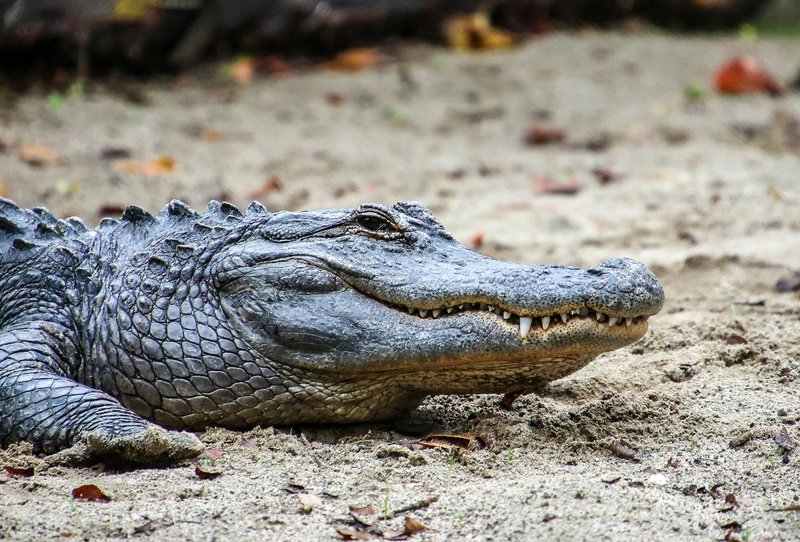
The role of the American alligator stretches far beyond its habitat in the swamps of the southeastern United States. It’s an icon in folklore, a symbol in art, and even a character in various media. In short, the alligator embodies the essence of nature’s elegance and raw power. Think of it as a character in a book that teaches us lessons about resilience and respect for the environment. So why is this creature so significant? Here’s what you need to know.
Cultural Influence: Alligators in Folklore and Mythology
Many cultures have stories that incorporate alligators as symbols of power or danger. In Native American folklore, for example, alligators often represent strength and wisdom. They are seen as guardians of the waterways, embodying the spirit of the earth. Some tribes believe that alligators hold unique knowledge about balance and survival. These stories remind us of the deep respect that native cultures have for their environment and the creatures within it.
In African folklore, alligators also appear as symbols of protection. Stories often depict them as helpers of the water spirits, guiding lost souls or aiding those in distress. This protective aspect connects the alligator to themes of nurturing and support, making it a complex figure rather than just a fearsome predator.
Over time, the alligator has made its way into more contemporary storytelling, too. Movies and cartoons frequently use alligators to represent villains or mischievous characters. This trend demonstrates how the American alligator has evolved into a symbol we recognize but also fear. The alligator, both revered and reviled, plays a role in teaching us about the balance of nature.
Artistic Representations: Alligators as Symbols in Art
Alligators have made significant appearances in art and design, where they symbolize various concepts. In American folk art, for example, alligators are often depicted in bright colors and whimsical styles. This portrayal turns the fearsome creature into something relatable and even lovable, inviting viewers to see them as part of the environment rather than just a threat.
In Louisiana, a state famous for its swampy habitat and vibrant culture, alligators often grace souvenirs and local crafts. This adaptation shows how the species has become not just an animal but a part of the southern identity. The alligator symbolizes resilience, thriving in an environment that’s both challenging and beautiful.
On the flip side, modern artists might use the alligator to comment on environmental degradation or the impact of urbanization. By incorporating alligators into their work, they highlight issues like habitat loss and the importance of conservation efforts. This duality shows how the alligator’s image can serve as a reminder of nature’s beauty, while also urging us to protect what remains.
Alligators in Sports and Mascots
Wherever you look in the world of sports, the American alligator often pops up as a mascot. Numerous teams adopt the alligator as a symbol of tenacity and strength. This choice reflects the desire to inspire athletes to embrace traits associated with this formidable creature. Teams in Florida and Louisiana have even named themselves after the gator, with spirited chants and merchandise celebrating their fierce representation.
As a mascot, the alligator embodies qualities that many athletes strive for: resilience, agility, and an intimidating presence. You might think about how players, when donning alligator-themed gear, feel a surge of confidence. They’re not just wearing a logo; they’re embracing the spirit of a powerful predator that thrives in its environment.
Moreover, the alligator also serves as a reminder of the importance of teamwork. Just as alligators work in groups to hunt, athletes often rely on their teammates to achieve success. This symbolism strengthens the bond between players and fans, creating a shared identity that extends beyond the sport itself.
Conservation and Environmental Symbolism
The American alligator is more than just a cultural icon; it plays a crucial role in its ecosystem. As an apex predator, it helps control the populations of various species, keeping the ecosystem balanced. This importance is often reflected in conversations about conservation and the need to protect fragile habitats.
In recent years, as more people have become aware of environmental issues, the alligator has served as a symbol of conservation efforts. Its presence in ecosystems is a sign of a healthy environment. When we talk about protecting wetlands and swamps, we often use the alligator as a poster child for these initiatives. Its decline can signal broader ecological issues, prompting action from communities and policymakers alike.
Nonprofits and conservation groups often use the image of the alligator to draw attention to the need for preservation. By focusing on this iconic creature, they inspire action and investment in local wildlife and habitats, turning public interest into impactful change.
Global Perceptions of Alligators
Not everyone views alligators through the same lens. In some cultures, they symbolize danger and fear. This perception often stems from a lack of understanding or from media portrayals that sensationalize their behavior. Movies frequently depict alligators as terrifying beasts lurking in the shadows, reinforcing the idea that they are solely threats.
However, it’s important to shift that narrative. Alligators are not just monsters to fear; they are essential parts of our ecosystem and cultural storytelling. Understanding them in a broader context can help dispel myths and encourage a more respectful attitude towards them.
By examining global perceptions of alligators, we can appreciate how culture shapes our views. In certain regions, alligators are respected creatures, while in others, they are seen as mere antagonists. Bridging this gap in understanding can foster respect for nature and promote a healthier relationship with all wildlife.
The American alligator is more than just a reptile; it’s a powerful symbol that spans cultures, industries, and narratives. As we’ve explored, it represents everything from strength to resilience and serves as a vital reminder of our connection to the natural world.
By understanding the cultural significance of the alligator, we can appreciate its role in folklore, art, sports, and conservation. This knowledge not only deepens our respect for the alligator but also encourages us to protect the ecosystems that sustain such vital creatures. So next time you encounter an alligator—whether in art or in nature—think about the stories it carries and the lessons it can teach us about the world.

